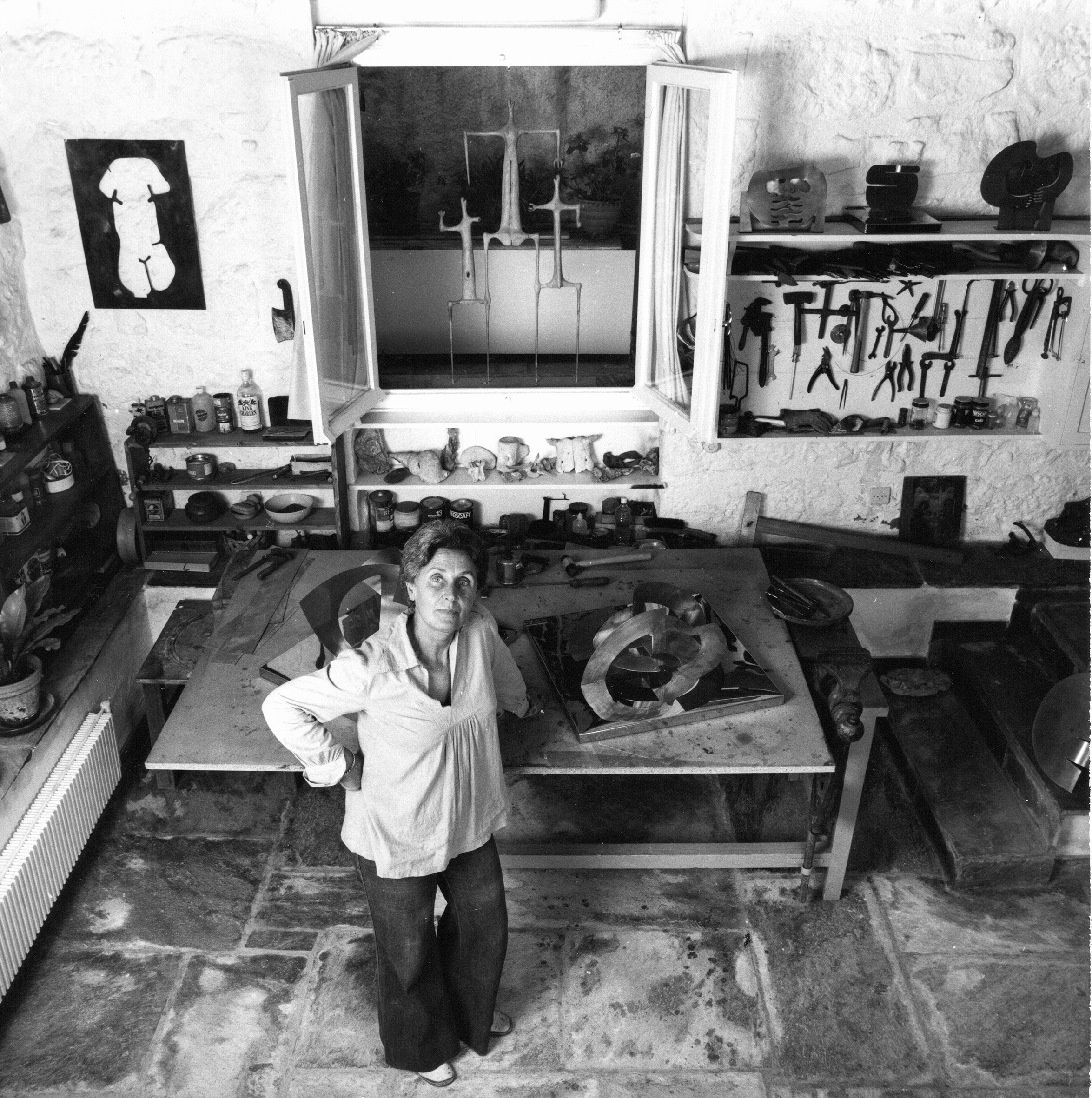All here! 50 years of Democracy
January 18, 2024 - April 14, 2024Exhibition “All here! 50 years of Democracy”
MOMus-Museum Alex Mylona (5, Agion Asomaton Square Μουσείο Thissio, Athens)
18 January – 14 April, 2024
Opening: Thursday 18 January 2024, 21:00
Stone, wire, wood, plaster and red carnations frame a slogan from the student uprising at the Athens Polytechnic in November 1973; the same slogan is also the title of the historical exhibition “All here! 50 years of Democracy” organised by MOMus to celebrate 50 years since the restoration of Democracy in Greece, which takes place at MOMus-Museum Alex Mylona in Athens, from 18 January to 14 April 2024.
The exhibition is under the patronage of H.E. the President of the Hellenic Republic Ms. Katerina Sakellaropoulou.
The exhibition “All here! 50 years of Democracy” brings together four of the most important visual artists from the post war period -Vlassis Caniaris, Dimitris Alithinos Vasso Katraki and A. Tassos- whose works of art were presented in exhibitions during the junta period or immediately after, as symbols of resistance and opposition, hope and democracy. The four visual artists were “present” with their work as an artistic expression, as a “political” position and attitude, consciously and unmediated in one of the darkest periods of Greek history.
A work by contemporary visual artist Yiannis Pappas, who lives and works in Berlin, acts as the “bridge” connecting the past with the present.
The dictatorship of 21 April 1967 was the tragic conclusion of the anomaly and dysfunctionality of Greek politics in the mid-1960s. Following an “informal” agreement most Greek artists choose to abstain from all cultural events, thus expressing their opposition to the junta and denying any legitimisation to the regime. Some artists became active members of anti-dictatorial organisations, some fled the country, others were arrested and exiled, while others still chose silence, isolating themselves in their studios. But very few remained politically indifferent to the grim reality they were experiencing, in a world already shaken by the Vietnam War, the assassination of Che Guevara, and the revolutionary fervour of the Parisian barricades of May ‘68. When abstention seemed to be going nowhere and started losing its momentum, the artists regrouped and reconsidered their stance.
The solo exhibition (1969) of Vlassis Caniaris at the New Gallery was one of the first shows that symbolically broke the artists’ “silence”. His compositions with plaster, barbed wire and red carnations –symbolizing the hopeful struggle for victory– lend themselves to an essentially political reading, alluding to the illiberal nature, the tortures, brutality and cruelty of the Colonel’s junta.
Dimitris Alithinos held two, now considered “historic” exhibitions in 1972 and 1973 at the small Studio 47 Theatre (organized by Desmos Art Gallery) and at the Ora Cultural Centre respectively. The works presented –such as the interrogation room, the cage with the skull and the living canary, the “crucified” red figure, as well as the “happening” with the white boxes and the living human parts– were not just breaking new ground for Greek art, but also raised critical questions about the role of artists and artworks especially during savage and illiberal times, seeking the direct involvement, participation and reaction of the viewer.
Vasso Katraki was one of the first to be arrested by the military regime, exiled to the small island of Gyaros. In the black ink of the works she created after her return from exile, she illustrates, with unparalleled expressive intensity and sensitivity, individual and collective emotions and experiences. Her exhibition at the Ora Cultural Centre (1972) brings together her compositions featuring maimed bodies, religious female figures (Platyteres) and her tragic image of Antigone preparing to fulfil her duty.
The exhibitions of Caniaris, Alithinos and Katraki, held amidst informers and policemen and under the looming threat of bans and persecution, attracted an astonishingly large number of visitors, whose mere presence substituted, in a way, for forbidden political activity.
The A. Tassos’ woodcuts from 1967-1974, exhibited after the restoration of democracy at the National Gallery (1975), capture pain and heroism, resistance and opposition, serving as powerful allegories, imposing in their epic, monumental style. The slaves, the bodies warped by barbed wire and the Tyrannicides converse with Che Guevara, contemporary fighters and the armed archangels at the gate of the Polytechnic.
EVERY ONE WAS there then, and EVERY ONE IS HERE still.
Curated by: Yannis Bolis, Art Historian, Head of Department of Contemporary Sculpture, MOMus-Museum Alex Mylona
Artworks’ loans by: A. Tassos Foundation, Alpha Bank Art Collection, Dimitris Alithinos, Christina Moustakli, Yiannis Pappas, Marianna Katraki’s family, Caniaris’ family
The exhibition is accompanied by a bilingual catalogue with texts by historians, art historians and visual artists: Manos Avgeridis, Yannis Bolis, Kostas Christopoulos, Domna Gounari, Evanthis Hatzivassiliou, Vangelis Karamanolakis, Elena Kechagia, Kostas Kostis, Thouli Misirloglou, Spyros Moschonas, Irene Orati, Yiannis Pappas

